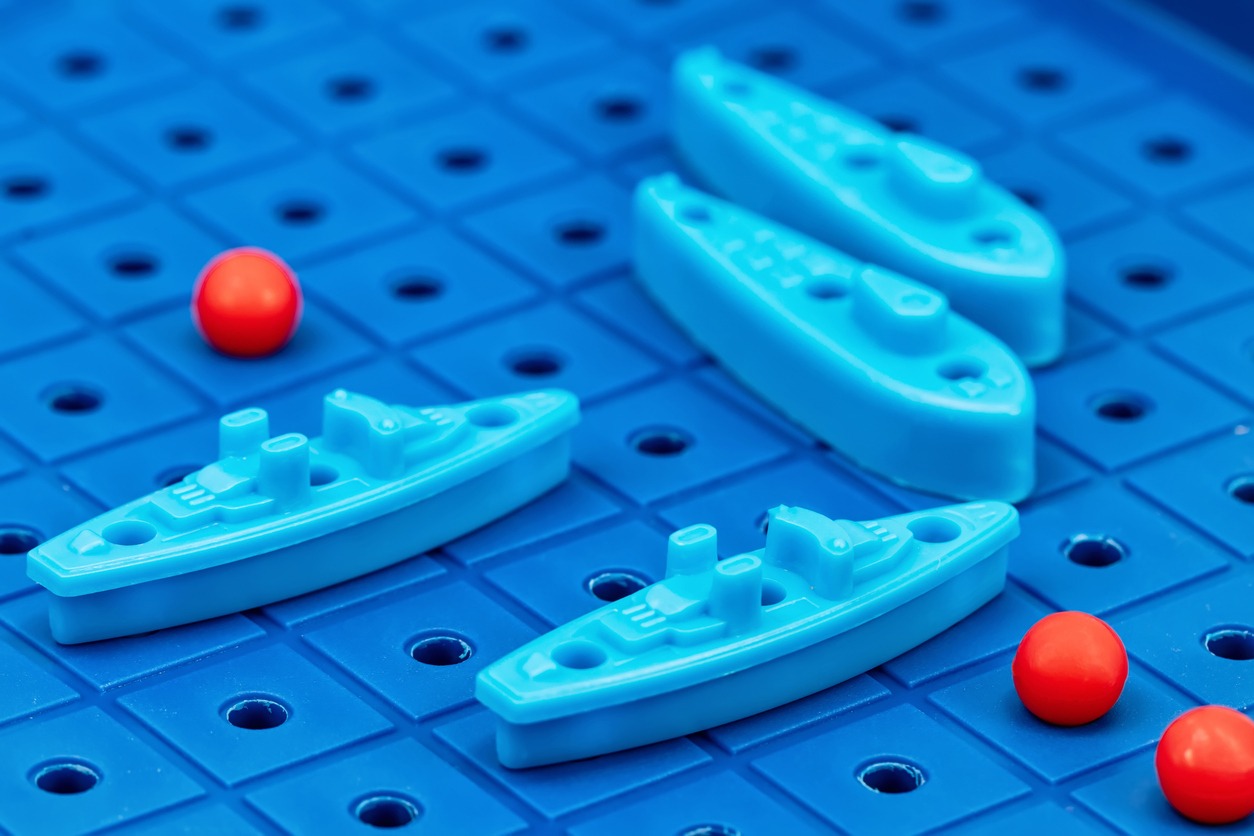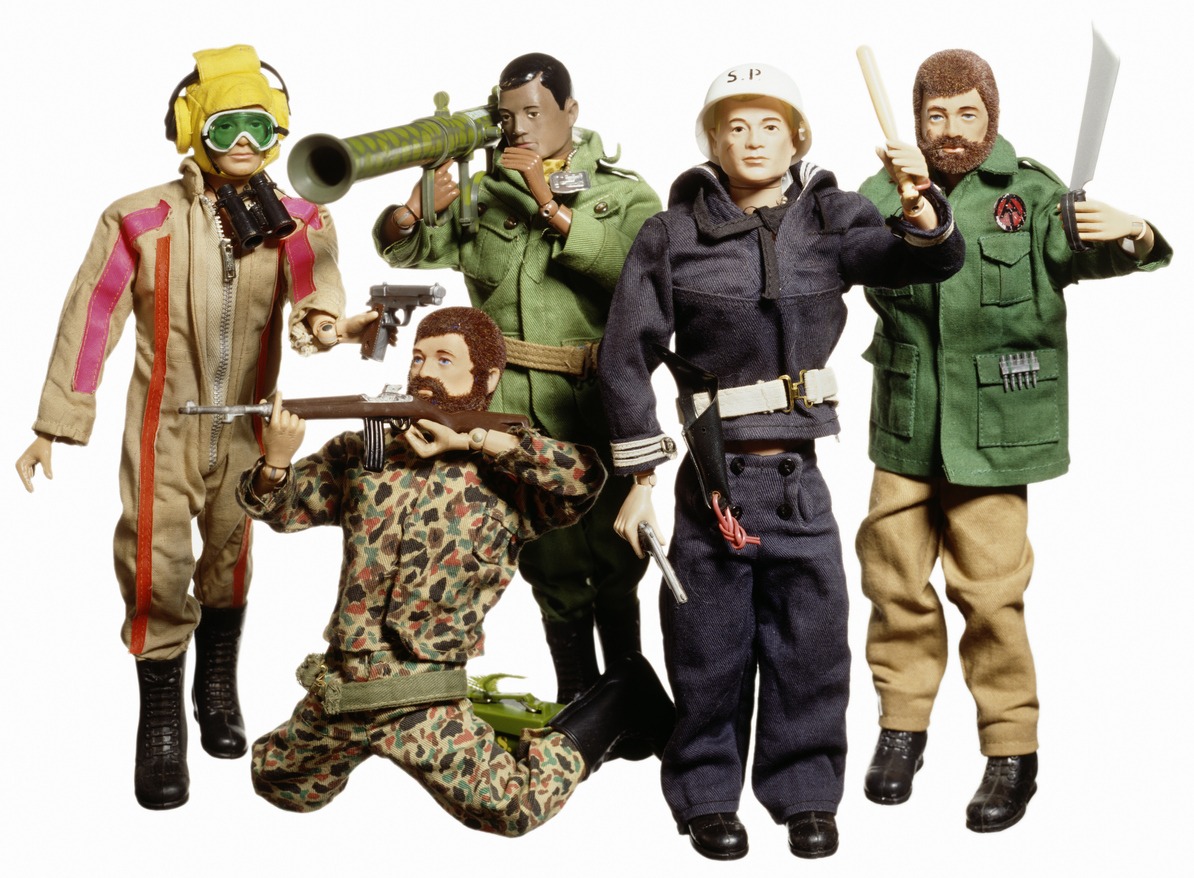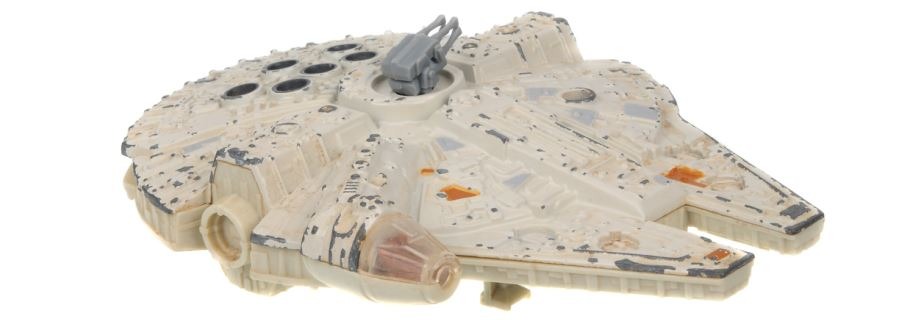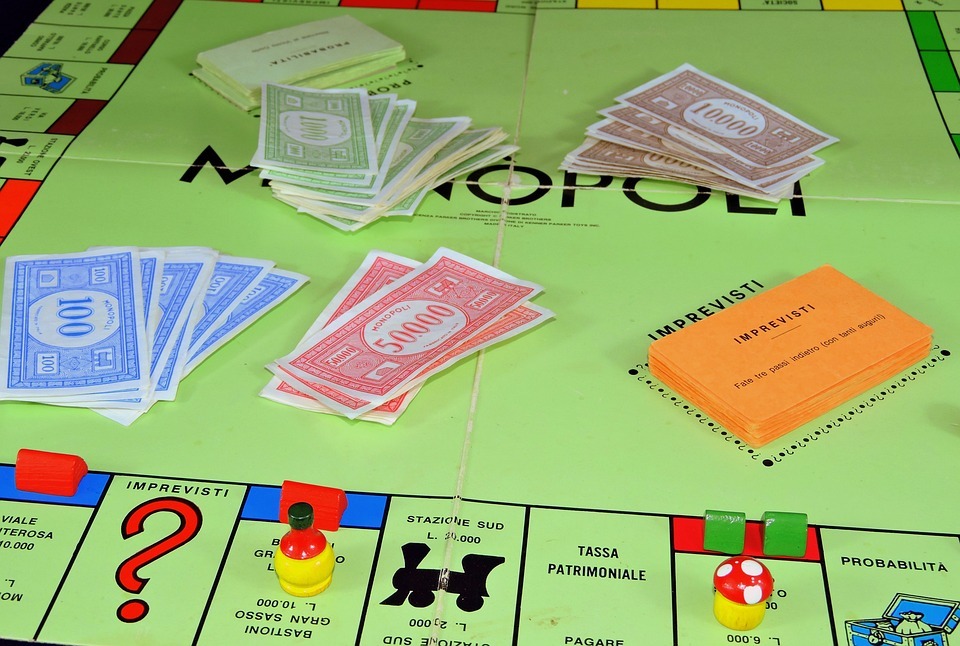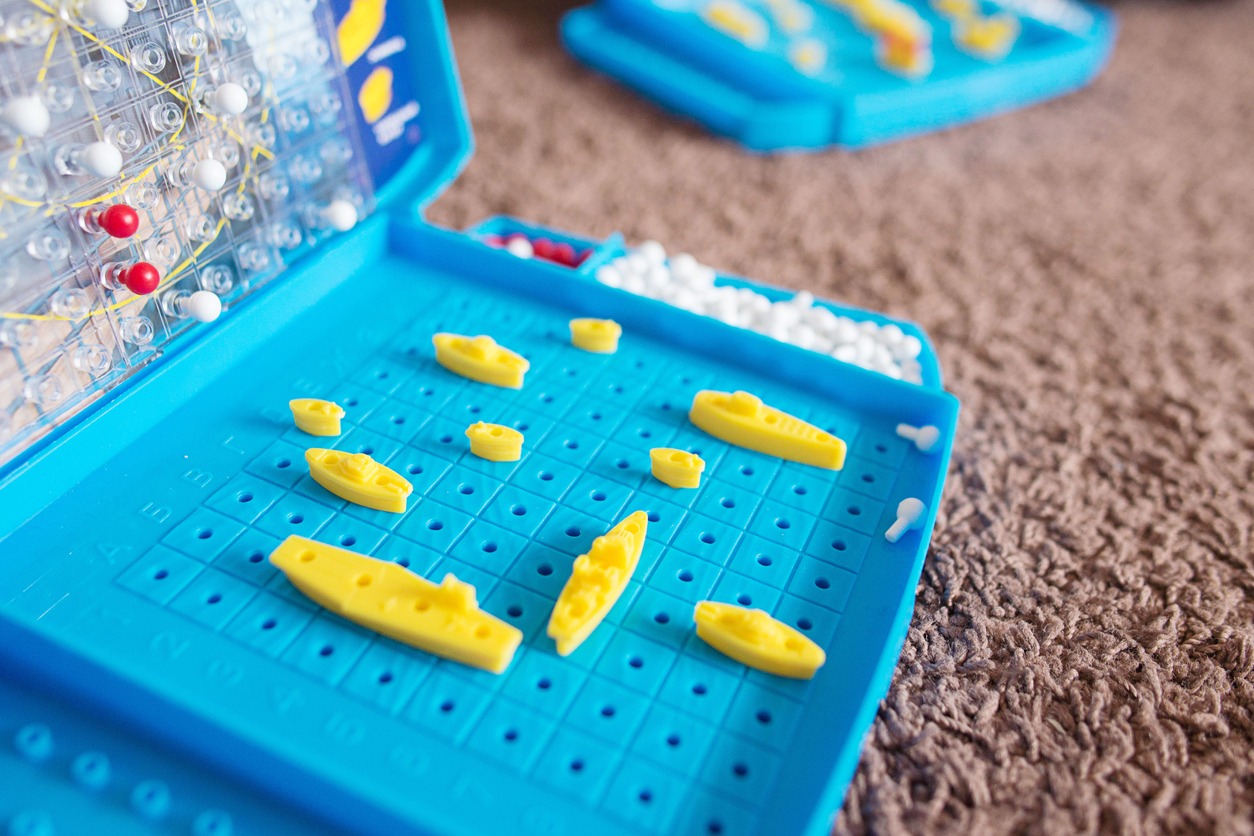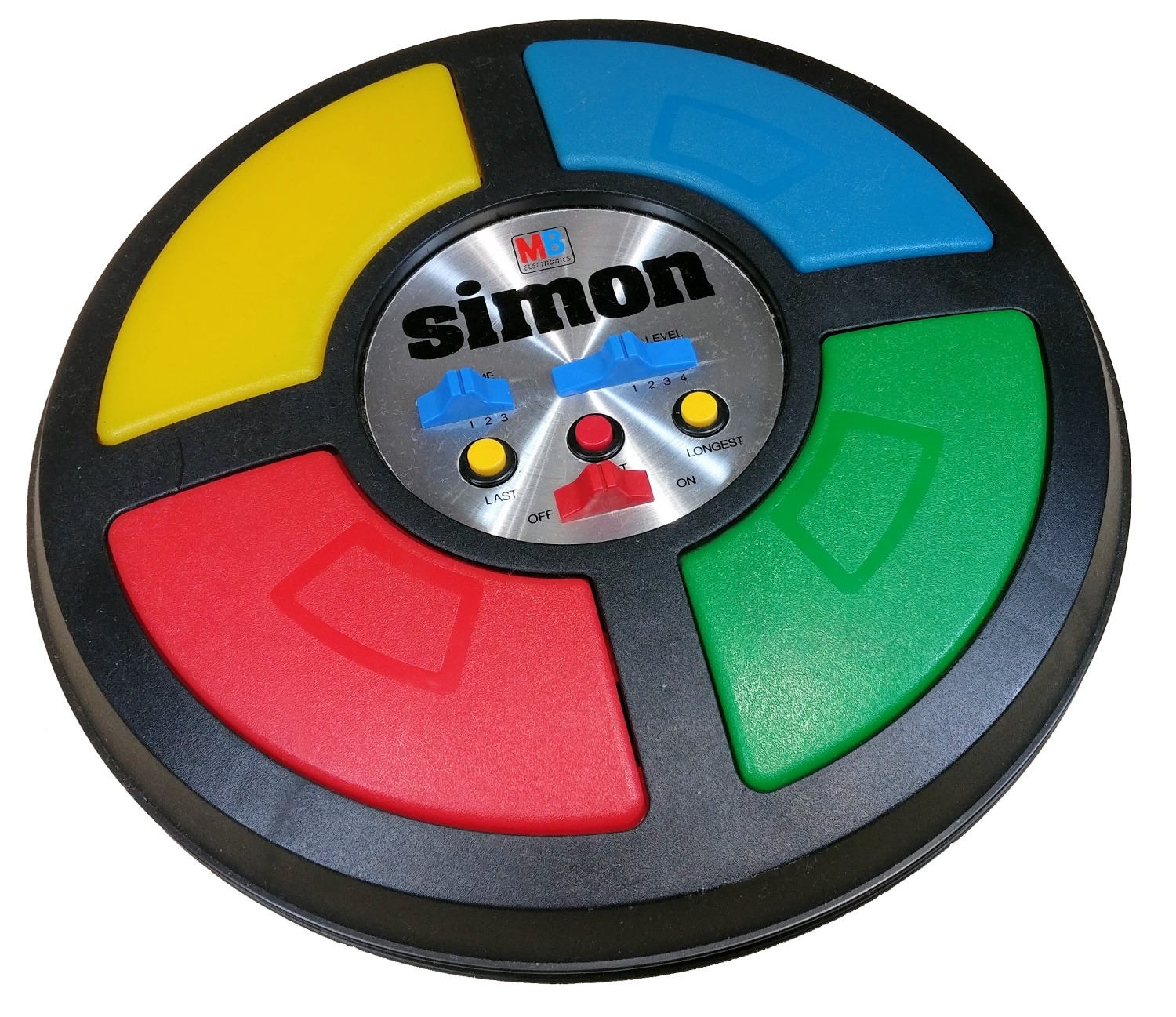The 1970s is known by many for its hip fashion trends and psychedelic music. However, what people don’t know is that some of the most popular and most valuable toys today were invented or popularized during the said era. To know more, here are the top pop culture toys of the 70s.
G.I. Joe
G.I. Joe is arguably one of the most popular toys that have come out of the 70s, and it also stood the test of time since many kids (and even a lot of adults) collect and play with G.I. Joe figures today. This particular line of toys was first introduced as “G.I. Joe: America’s Movable Fighting Man” in 1964, and this line was produced and sold by Hasbro Toys.
However, before the release of the first line of G.I. Joe toys by Hasbro, the original idea for the design of the G.I. Joe action figures were developed by an American licensing agent named Stanley Weston in 1963. [1] Weston became interested in military-themed toys after his frequent trips to an Army-Navy surplus store in New York City. In addition, he was also fond of collecting military uniforms and paraphernalia. Then, in 1963, Weston approached the creative director of Hasbro Toys, Donald Levine, to introduce an idea of a military-themed toy line that features figures that can have outfits and accessories.
The “G.I. Joe: America’s Movable Fighting Man” is considered to be the first “action figure,” and the term was also coined by Hasbro in 1964 in order to differentiate G.I. Joe toys from “dolls” that are usually associated with toys for girls. The line of action figures would continue until 1969. In 1970, the G.I. Joe brand would be revitalized with a new product line called “G.I. Joe Adventure Team.” This specific line of G.I. Joe toys was the one that made the G.I. Joe figures popular in the 1970s and beyond.
After “G.I. Joe Adventure Team,” the line of action figures was revamped numerous times, and the most popular revamps include the “Classic Collection” from 1995 to 2004, the “G.I. Joe 40th Anniversary” collection from 2003, and the “50th Anniversary” collection from 2014.
Here are three G.I. Joe figures that you can still buy online:
- Super7 G.I. Joe Cobra Commander 3.75-inch ReAction Figure – this action figure from Super7 features a retro-style rendition of Cobra Commander, the main antagonist in the G.I Joe animated series. Not only is the retro style found in the figure’s design, it can also be found in the beautiful full art cardback that is inspired by one of the earliest packaging of G.I. Joe figures.
- G.I. Joe Classified Series Stuart “Outback” Selkirk 6-inch Figure – this action figure is part of the Classified Series, which is a toy line that is bigger than the retro figure that is just 3.75 inches in height. The action figure comes with multiple accessories, including a backpack, a pistol, a knife, and a flashlight.
- G.I. Joe Classified Series Snake Eyes & Timber 6-Inch Figures – an action figure of one of the most popular characters in G.I. Joe, Snake Eyes. However, he comes with a figure of a trustworthy wolf named “Timber.” Besides Timer, Snake Eyes also comes with a variety of weapons, including his signature blade.
Kenner Star Wars Action Figures
Star Wars is a legendary franchise that was first introduced in 1977 with the release of the eponymous film that was created and directed by George Lucas. Even before the release of the first Star Wars movie, there were already talks of releasing a toy line for it. The license for Star Wars figures was offered to the Mego Corporation in 1976.
The Mego Corporation was an American toy company that was founded in 1954 and became the leading manufacturer of action figures in the 70s. Unfortunately, the Mego Corporation refused the offer to produce Star Wars figures, so the license went to Kenner, a toy company owned by the General Mills Fun Group. What the Mego Corporation and Kenner didn’t anticipate is that Star Wars would become a blockbuster hit. [2]
Kenner was unprepared for the high demand for Star Wars figures following the success of the first movie in the franchise. However, Kenner’s dilemma was also brought about by George Lucas’s unwillingness to give character and vehicle designs to Kenner out of fear that his creations may be plagiarized by rivals or competitors in the industry.
In order to at least release a Star Wars-related product for the Christmas of 1977, Kenner decided to sell an “Early Bird Certificate Package,” which can be redeemed at a later date for four Star Wars action figures. When redeemed, the package included figures of Luke Skywalker, R2-D2, Chewbacca, and Princess Leia. These figures came with a diorama display stand, a membership card for the Star Wars fan club, and a couple of stickers.
The line of Star Wars action figures by Kenner would become one of the most popular toy lines in the 1970s. In just one year of production from 1977 to 1978, Kenner was able to sell 40 million units of Star Wars action figures, which account for about $100 million in revenue.
Throughout the years, there have been various Star Wars figures by Kenner that were collected and considered to be rarer compared to most figures in the line. Some of these rare Star Wars figures are:
- Blue Snaggletooth – the first Snaggletooth action figure that is featured in the Cantina adventure playset. The problem with this figure was that the character it is based on was wearing a red outfit rather than a blue outfit. So, Kenner corrected this mistake by discontinuing the Blue Snaggletooth figure and replacing the sets with the Red Snaggletooth figure. Because of the scarcity of the Blue Snaggletooth figures, they are sought after by collectors of Kenner and Star Wars toys. If you want to get your hands on a Red Snaggletooth variant, you can purchase the Star Wars Power of the Jedi Zutton Snaggletooth Figure.
- Vinyl Cape Tatooine Jawa – this Kenner toy figure features a vinyl cape that covers the back and the side of the Jawa, an alien creature from the fictional planet Tatooine. During the figure’s first days of production and distribution, Kenner realized that the vinyl cape didn’t look nice and made the figure look cheap. So, Kenner replaced the vinyl cape with a cloth cape in the next production cycles of the figure. However, a small number of vinyl cape Jawa figures still made it to stores, and it is now considered one of the rarest Star Wars figures made by Kenner. [3] If you just want a retro Jawa figure in your collection, you should see the Star Wars Vintage Collection Jawa Action Figure online.
- Rocket-Firing Boba Fett Prototype – the rarest Star Wars figure, according to many collectors, is the rocket-firing Boba Fett prototype, which was said to have been produced in small quantities before being discontinued because some people deemed that “rocket-firing” action figures were dangerous. Check out the Star Wars Vintage Collection Boba Fett Action Figure so that you can still be able to collect a Boba Fett figure, although it isn’t the rare one.
Barbie
Even though Barbie has been around since 1959, it was in the 1970s when the popularity of the doll line increased significantly. It was in 1971 when Barbie dolls were redesigned to look forwards rather than sideways, which has been the case for all Barbie dolls before the 1970s. This change in the design of Barbie dolls would stick until the present day.
It was also in 1971 when Mattel, the company behind Barbie dolls, introduced Malibu Barbie. [4] This particular variant of Barbie is a blonde and tanned doll who usually wore different kinds of swimsuits, and the iconic blue swimsuit was introduced with a new version of Barbie in 1974. Because of the popularity of Malibu Barbie, Mattel would continue to produce versions of this variant over the years.
One of the most recent iterations of Malibu Barbie comes in the form of the Barbie Malibu Camping Playset, which comes with more than ten accessories, including a backpack, a cap, and a sleeping bag.
In 1977, Mattel introduced SuperStar Barbie, which is a variant that has a wide smile, shimmering eyes, and outfits that famous pop and disco stars wear. SuperStar Barbie was a step in a different direction compared to Malibu Barbie, as the variant focuses more on the glamorous and hip lifestyle of celebrity superstars as opposed to the laid-back vibes of Malibu Barbie. Much like Malibu Barbie, SuperStar Barbie became a hit in the 70s, and due to its popularity, the variant has been rereleased and improved upon in different eras or time periods.
If you want the 1977 version of SuperStar Barbie, you have the chance to get the Barbie: My Favorite Time Capsule 1977 SuperStar Doll version.
Stretch Armstrong
Stretch Armstrong is an action figure that is made of latex rubber and is filled with a gel-like substance inside. Because of how soft the latex rubber exterior is, the action figure is quite soft and flexible. Then, with the added gel-like substance, there is a little bit of resistance whenever you pull an arm, a leg, or the head of the figure. The gel-like substance also helps the figure retain its shape whenever its body parts are pulled, although the figure would shrink back to its original appearance after a few seconds or minutes.
The concept for Stretch Armstrong was conceived by Jesse D. Horowitz, an industrial designer for the R&D (research and development) group of Kenner. [5] Horowitz created the “stretch man” idea with two body types. The first body type was a sumo wrestler while the second body type was an “All-American” masculine man with blonde hair.
Horowitz turned the idea into reality by sculpting models for the two body types. After creating the models, he realized that the sumo wrestler was too big and bulky, so he went ahead in refining the “All-American” body type instead. The idea was then approved by Jeep Kuhn, the head of R&D and the vice president of Kenner
Horowitz first thought about using springs to allow the latex rubber exterior of the toy figure to stretch. However, the springs are too stiff, and they would often pierce the skin if they are pulled or pushed too much. Jeep Kuhn, who was also a chemical engineer, provided the idea of using liquid sugar or corn syrup to enable the toy to stretch and retain its shape for a long time.
Stretch Armstrong was released in 1976 and became a very popular toy among kids during that time. In the present era, the original 70s Stretch Armstrong figures are highly sought after by toy collectors, with some even selling for thousands of US dollars. However, the remaining units or pieces of Stretch Armstrong figures are scarce in recent years, as the latex rubber and the gel-like substance inside the figure don’t really last a long time. So, only those figures that are unplayed and kept in safe storage survive.
If you don’t care about the resale value of toys and just want to play with a Stretch Armstrong figure, you can buy The Original Stretch Armstrong Toy online.
Monopoly (Board Game)
Monopoly is regarded as one of the most recognizable board games of all time, and almost every household has at least one box of Monopoly in the living room or one of the bedrooms. Similar to Barbie, the Monopoly board game has been around for many years before the 70s, but it is in the said time period that the board truly became a staple of game nights or fun days with friends or family members.
If you haven’t tried the game yet, you should definitely buy a Monopoly set and play it with your loved ones.
The Monopoly board game was published in 1935 by the Parker Brothers, an American toy company that is best known for publishing board games like Clue, Sorry!, and Risk. However, the origins of the board game can be traced back to 1903, when writer and anti-monopolist Lizzie Magie created a game that can better explain the negative aspects of a monopoly (where a single company dominates a specific market with little to no competition).
Magie’s game was called “The Landlord’s Game,” and this game would be developed into numerous variants throughout the 1930s. The most popular variant was created by an American salesman named Charles Darrow, and the game he created was called “Monopoly.” The Parker Brothers would eventually buy Darrow’s license for the game and release it to the public in 1935. [6]
By the 1970s, Monopoly became one of the best-selling board games in the United States. However, the board game was shadowed by controversy during the said time period, as the Parker Brothers sued an economics professor named Ralph Anspach for trademark infringement over the publication of a board game called “Anti-Monopoly.” Anspach won the case in 1969, as the court determined that the trademark for “Monopoly” was generic and unenforceable.
However, by 1984, the Park Brothers were able to hold valid trademarks for the “Monopoly” name, although “Anti-Monopoly” was exempted from trademark infringement. Interestingly, Anspach would reach a settlement, with Anspach being able to market his game while it is still under license from the Parker Brothers.
Battleship (Board Game)
Many know Battleship today as a board game that is produced and published by Milton Bradley, but it was originally created as a pen-and-paper game years before Milton Bradley created the current board game iteration.
For the current iteration of the game, you can check out the Battleship Board Game published by Hasbro.
The origins of Battleship can be traced back to the 1890s when a game called “L’Attaque” was gaining popularity in France and had similar gameplay mechanics to the modern Battleship game. The first commercial variant of the pen-and-paper strategy game was called “Salvo,” and this was published by the Starex company, an American board game manufacturer, in 1931. [7]
In 1967, Milton Bradley, a board game manufacturer based in the United States, published a version of the Battleship that uses pegs and plastic boards. After the release of the plastic board version of Battleship, the game became a best-selling board game in the US. In 1997, Milton Bradley introduced the Electronic Battleship, which features a computerized board that generates different kinds of sounds to make the game feel more immersive.
Simon (Electronic Game)
The last toy in this list is Simon, an electronic game that was invented in the late 1970s by two game designers named Ralph H. Baer and Howard J. Morrison. [8] The pair of game designers first introduced an Atari arcade game called “Touch Me” in 1976, and this particular game has similar mechanics to Simon due to how the players press different buttons to play the game. Unfortunately, the pair didn’t really like the game and wanted to improve it to be more fun and exciting to play. They would then come up with a game called “Follow Me,” which featured electronic sounds.
When the said game was pitched to Milton Bradley, the pair of game designers decided to name it “Simon,” which is supposed to be a namesake for the simple children’s game called “Simon Says.” Interestingly, both the simple children’s game and the electronic game share similar mechanics, as there will be a leader (in the electronic game’s case, an electronic voice) that will dictate what you will do (or what buttons you will press).
The “Simon” electronic game was released in 1978 and quickly became one of the top-selling toys in the US. In fact, it was actually one of the best-selling toys during the Christmas season of the said year. After the success of the original “Simon” game, many more variants or versions of the game were created, including “Pocket Simon” (a smaller-sized game), Super Simon (which features more buttons), and Simon Stix (which are designed to look like a pair of drumsticks).
For those that want to play the most recent version of Simon, they can buy the Simon Electronic Memory Game published by Hasbro.
And those are the top pop culture toys of the 70s. Because of how much they have influenced pop culture, the toys we have mentioned above are still quite popular today not only to those that grew up playing them but also to kids that have never really experienced those toys’ popularity in the 70s. The toys we have mentioned in this article will most likely still be popular for future generations because of their timeless designs and gameplay mechanics.
Nerf Ball
The Nerf Ball is a foam ball that was produced by the Parker Brothers and released in 1969. [9] The Nerf Ball is 4 inches in diameter and is made from polyurethane, which is a type of foam that was commonly used in furniture and footwear. The ball’s inventor, Reyn Guyer, came to the office of Parker Brothers in 1969 alongside Fred Cox, the then-kicker for the Minnesota Vikings, to show a football game that is safe to play indoors. After careful consideration, Parker Brothers decided to abandon Guyer’s idea of an indoor football game but decided to keep Guyer’s concept of a foam ball.
The foam ball, which Parker Brothers called the “Nerf Ball,” was released in the same year that Guyer introduced it to the company. The name of the foam ball was inspired by the term “nerf bar.” The said term was specifically used for the foam padding that is fitted to the side of a vehicle for protection. Parker Brothers picked the name because the ball can protect lamps, windows, or other pieces of furniture while still letting the kids play with the toy.
By the end of 1970, there were more than four million Nerf Balls that were sold on the market. Because of the success of Nerf Balls, Parker Brothers decided to create a new brand called “Nerf,” and this new line included different kinds of toys that are made of foam, like the Nerf Football, the Nerf basketball game called “Nerfoop,” and a larger version of the original foam ball called the “Super Nerf Ball.”
Parker Brothers would hand control of Nerf Products to Kenner, a sister company, in the 1980s. Then Kenner would be bought by Tonka Corporation (known for producing toy trucks), and Tonka would be bought by Hasbro in 1991. So, since the 1990s and as of 2023, Hasbro has owned the Nerf brand. It is through Hasbro that the Nerf brand was reinvented as a plastic toy gun line that has bullets made of foam and rubber.
Baby Alive
Baby Alive is a brand of baby dolls that was originally made by Kenner and was launched in 1973. When Kenner was designing the baby doll, they thought about a toy that can be fed packets of food and water so that children would feel like they are feeding and taking care of an actual baby.
When Kenner released the first Baby Alive dolls in 1973, the dolls also came with diapers, a bottle, and a feeding spoon. [10] Whenever a kid feeds a Baby Alive doll, the kid would have to insert the spoon with the content of the food packet into the doll’s mouth, and then the content of the food packet would travel inside the doll and downwards, thus ending up on the doll’s diaper.
The original eating baby doll was then followed up with the first talking Baby Doll in 1991. Unfortunately, the Baby Alive doll produced by Kenner would only last until 2000, when Hasbro absorbed the same company and decided to close it down. Fortunately, Hasbro eventually revived the Baby Alive toy line in 2006.
Hungry Hungry Hippos
Hungry Hungry Hippos is a tabletop game that was produced and launched by Milton Bradley in 1978. The inventor of the game was Fred Kroll, a toy designer that published the idea for the game in 1967, nine years before Milton Bradley launched their version.
In terms of gameplay, Hungry Hungry Hippos can be played by two to four players, with each player controlling a small plastic hippo that is connected to the side of the board. In the middle of the board is a shallow bowl where balls can be placed, and whoever collects the most balls in the game wins. To collect a ball, a player will need to press a button on the hippo or on the side of it, and the hippo’s head will extend forward towards the bowl and open its mouth.
Today, there are different versions of Hungry Hungry Hippos that you can buy. Here are a few that you can check out online:
Pet Rock
You may probably see pet rocks today as memes or as a popular joke from the hit animated TV show called SpongeBob SquarePants, but the Pet Rock was actually a real toy that was released in 1975 by an advertising executive named Gary Dahl.
According to the inventor, he came up with the idea for Pet Rock while in a bar with his friends. [11] At the bar, his friends were complaining about their pets, particularly about how difficult it is to take care of domesticated animals. Then, Gary Dahl declared that a rock would be the perfect “pet,” as it doesn’t need to be fed, walked, groomed, and bathed. In addition, the pet rock wouldn’t die or get sick.
While Dahl’s friend took the idea as a joke, he actually wanted to make it into reality, so he bought materials for the packaging of his products, which are said to be much more expensive than the actual pet rocks. Then, he wrote a 32-page manual that comes with every Pet Rock, and this manual was titled “The Care and Training of Your Pet Rock” and contains jokes and puns about taking care of a pet that doesn’t need to be fed or bathed.
The Pet Rock was released in December 1975 and was discontinued in February 1976. Although the product was discontinued after a few months of production, Dahl was able to sell more than 1 million Pet Rocks. In recent years, due to popular demand, the Original Pet Rock toy was made available online and in various stores.
Speak & Spell (Electronic Toy)
Speak & Spell is a line of electronic toys that was first produced by a tech company called Texas Instruments in 1978. The Speak & Spell products are not just simple toys, as they are actually child computers that consist of a synthesizer, a keyboard, and a receptor slot where a kid can insert one of the many ROM game library modules developed by Texas Instruments.
The Speak & Spell toy was invented in the 1970s by a team of Texas Instruments engineers led by Paul Breedlove, one of the best engineers in the company. The development of the toy started in 1976, with the company giving the engineers a $25,000 initial budget.
After two years of development, the first Speak & Spell child computer was introduced in June 1978 at the Summer Consumer Electronics Show (CES). [12] The toy was considered one of the earliest electronic devices that has a visual display and game cartridges that are interchangeable.
The Speak & Spell was produced by Texas Instruments from 1978 to 1992. Then, when Basic Fun!, a toy company known for manufacturing Care Bears and My Little Pony toys, acquired the rights to manufacture Speak & Spell toys, they revived the line in 2019 with modern features and improvements.
Atari Home Pong (Video Game Console)
Home Pong is a video game console that enables people to play Pong at home. Before the creation of popular retro home consoles like the Nintendo Entertainment System (NES) or the SEGA Genesis, the only way for a lot of gamers to play video games was by going to an arcade. In an arcade during the 1970s, kids and teenagers play Pong, which is a digital and simplified version of the sport called Ping Pong. In the game, two players take turns hitting a ball in different directions and trajectories so that their opponent won’t be able to catch it and hit it again.
Because of the popularity of the Pong Arcade machine in the early 1970s, Atari, a video game developer founded in 1972, decided to make a video game console so that people can play Pong even if they are at home. Atari’s Home Pong console was released in 1975 and was sold through Sears, a chain of department stores in the United States. [13] The first units of the Home Pong console were branded with the “Tele-Games” name that was created by Sears.
Ants in the Pants
Ants in the Pants is a game that was invented and designed by game designer William H. Schaper, who was also known for inventing insect-themed games like Cootie and Tickle Bee. Ants in the Pants was originally produced by Schaper’s company called Schaper Toys in 1968, but the game was purchased by Hasbro in 1986, and it remains one of the popular games produced by the said company.
The name of the game is inspired by the English idiom that describes nervous people as having “ants in their pants.” The rule of Ants in the Pants is to make all of the ants of the same color jump into the plastic bucket that is shaped like pants. Each player can choose from four different colors of ants, and once they have chosen a color, they will have to control the ants of the same color and make them jump by pressing on their ends.
And those are the top pop culture toys of the 70s. Because of how much they have influenced pop culture, most of the toys we have mentioned above are still quite popular today not only to those that grew up playing them but also to kids that have never really experienced those toys’ popularity in the 70s. The iconic toys in this article will most likely still be popular for future generations because of their timeless designs and gameplay mechanics.
References
[1] Sandomir, R. (2017, May 11). Stan Weston, 84, Dies; Sent G.I. Joe Marching Into Childhoods of Millions. The New York Times. Retrieved May 29, 2023, from https://www.nytimes.com/2017/05/11/business/stan-weston-dead-gi-joe-creator.html
[2] Roddy BW. (2017). This Is The Empty Box You’re Looking For: How The First Kenner ‘Star Wars ‘Toys Came To Be. Vocal Media Geeks. Retrieved May 29, 2023, from https://vocal.media/geeks/this-is-the-empty-box-you-re-looking-for-how-the-first-kenner-star-wars-toys-came-to-be
[3] Harn, D. (2022, October 23). The 10 Rarest Star Wars Toys (& How Much They Cost). CBR (Comic Book Resources). Retrieved May 29, 2023, from https://www.cbr.com/star-wars-rarest-toys-how-much-cost/
[4] Barbie Media. (n.d.). History: 1970s. Barbie Media. Retrieved May 29, 2023, from http://www.barbiemedia.com/about-barbie/history/1970s.html
[5] VanHooker, B. (2021). AN ORAL HISTORY OF STRETCH ARMSTRONG’S DELIGHTFUL DESTRUCTIBILITY. MEL Magazine. Retrieved May 29, 2023, from https://melmagazine.com/en-us/story/stretch-armstrong
[6] Latson, J. (2014, November 5). The Most Popular Game in History Almost Didn’t Pass ‘Go’. Time Magazine. Retrieved May 29, 2023, from https://time.com/3546303/monopoly-1935/
[7] Grahame, J. (2007, April 16). An Armada of Battleships. Retro Thing. Retrieved May 29, 2023, from https://www.retrothing.com/2007/04/an_armada_of_ba.html
[8] Corday, K. (2022, March 12). WHAT HAPPENED TO THE SIMON TOY? Grunge. Retrieved May 29, 2023, from https://www.grunge.com/797178/what-happened-to-the-simon-toy/
[9] Dunnett, T. (2023, March 7). The History of Nerf (Who Invented the First Nerf Gun?). Blaster Central. Retrieved June 9, 2023, from https://www.blastercentral.com/nerf-history/
[10] Townsend, A. (2011, February 16). 1970s: Baby Alive. Time Magazine. Retrieved June 9, 2023, from https://content.time.com/time/specials/packages/article/0,28804,2049243_2048657_2049150,00.html
[11] Rossen, J. (2019, August 22). Hard Sell: A History of the Pet Rock. Mental Floss. Retrieved June 9, 2023, from https://www.mentalfloss.com/article/595180/pet-rock-history
[12] Bellis, M. (2019, February 5). The Interesting History of the Classic ‘Speak and Spell’ Toy. ThoughtCo. Retrieved June 9, 2023, from https://www.thoughtco.com/what-is-a-speak-and-spell-1992413
[13] Modany, A. (2012, April 17). Pong, Atari, and the origins of the home video game. National Museum of American History. Retrieved June 9, 2023, from https://americanhistory.si.edu/blog/2012/04/pong-atari-and-the-origins-of-the-home-video-game.html

